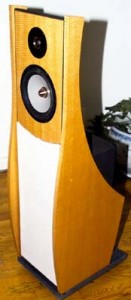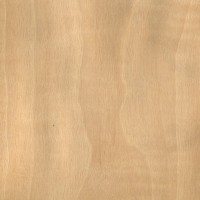Searching innocently for images of Aniegre, Anigre, and Anegre, one might stumble accidentally upon Arizona Muse flipping some Louis Vuitton handbags. She can call herself whatever she wants for as long as she wants, and I’ll keep telling myself she’s sitting on a plank of Aniegre for this shoot. The lovely Arizona has this outfit figured right out.
Trade Names: Aniegre, Anigre, Anegre.
Scientific Classification:
Kingdom: Plantae
Family: Sapotaceae
Genus: Aningeria
Species: A. altissima, A. dombeyi, A. robusta, A. superba, and many others marketable as Aniegre.
Janka Hardness (pounds-force): 930
Description: Heartwood is a pale yellow, sometimes accented with faint hues of red. Texture is medium with closed pores. Without Arizona Muse in the discussion, Aniegre is rather plain looking, relatively similar to the maples, but softer.
Location: Central Africa, namely: Cameroon, Zaire, Congo, Mozambique, Angola, Benin, Central African Republic, Kenya, Liberia, Nigeria, Sudan, Togo, Uganda, Ethiopia.
We don’t make these Orion loudspeakers, which were copyrighted by Siegfried Linkwitz. Fortunately for society, Carleton Woodworking can set you on track if you’ve got Arizona Muse coming over for a hot date. Always best to have some Aniegre veneer around the house, just in case.
Common Aliases: Aningeria blanc, Asamfona, Kali, Kararo, Landojan, M’boul, Mukalati, Muna, N’kali, Nkalate, Nkalati, Osan, and many other regional language references. What I know for sure is there is not one English consensus here.
Performance: Aniegre is a commonly used veneer wood, as seen in the photo above. The overall performance of the wood is probably slightly below average, but it’s a good multi-purpose lumber. Again, it’s more widely used in Europe than the United States, but it is used for everything from bulk production products to specialty lumber designs. A solid all-around wood, though not very hard, and not particularly resistant to rot and insects.
Affordability: $$ Aniegre is widely available and relatively affordable for an African import. It’s more widely used in Europe due to its close proximity to source stands.
You say you want to look at the lumber? Without Arizona Muse? I’ll take your word for it, courtesy of the fantastic Wood Explorer Database, but it certainly won’t be the same…
Common Uses: Aniegre is generally a specialty wood used in many different applications such as: Flooring, paneling, furniture, arts and crafts, carvings, turnings, organ pipes, pianos, plywood, veneer, and etc.
From: The Wood Database:
Common Name(s): Anigre, Anegre, Aniegre, Aningeria
Scientific Name: Aningeria spp. (A. adolfi-friederici, A. altissima, A. dombeyi, A. robusta, etc.)
Distribution: Africa (most common in tropical areas of east Africa)
Tree Size: 180 ft (55 m) tall, 3-4 ft (1.0-1.2 m) trunk diameter
Average Dried Weight: 32 lbs/ft3 (510 kg/m3)
Basic Specific Gravity: .40
Hardness: 930 lbf (4,160 N)
Rupture Strength: 11,490 lbf/in2 (79,220 kPa)
Elastic Strength: 1,324,000 lbf/in2 (9,130 MPa)
Crushing Strength: 6,590 lbf/in2 (45.4 MPa)
Shrinkage: Radial: 3.8%, Tangential: 7.0%, Volumetric: 11.8%, T/R Ratio: 1.8


